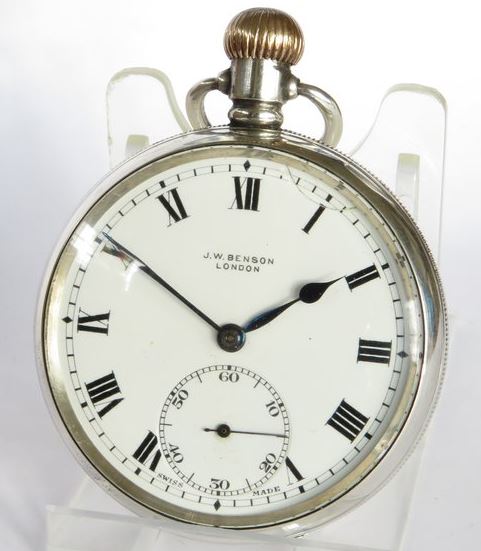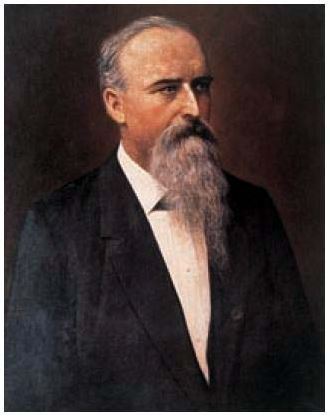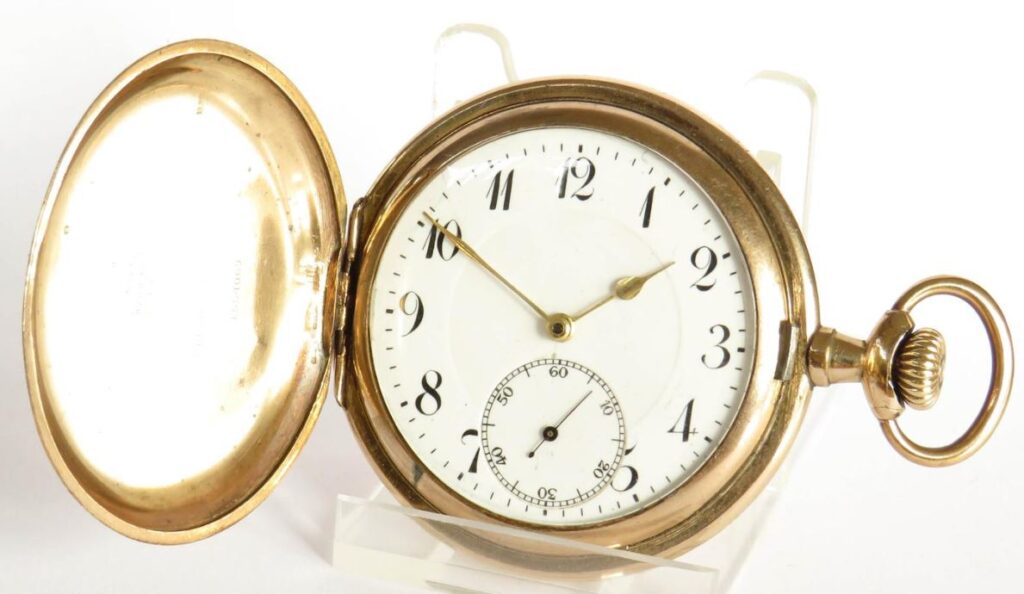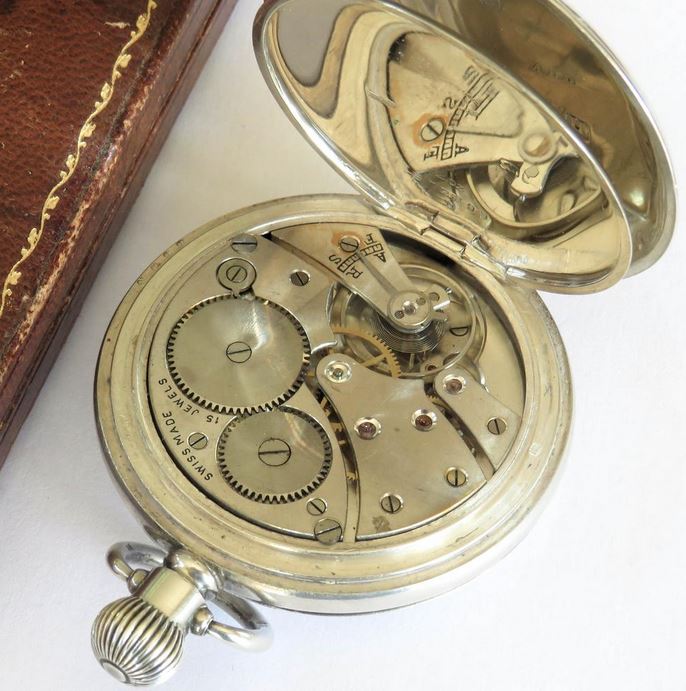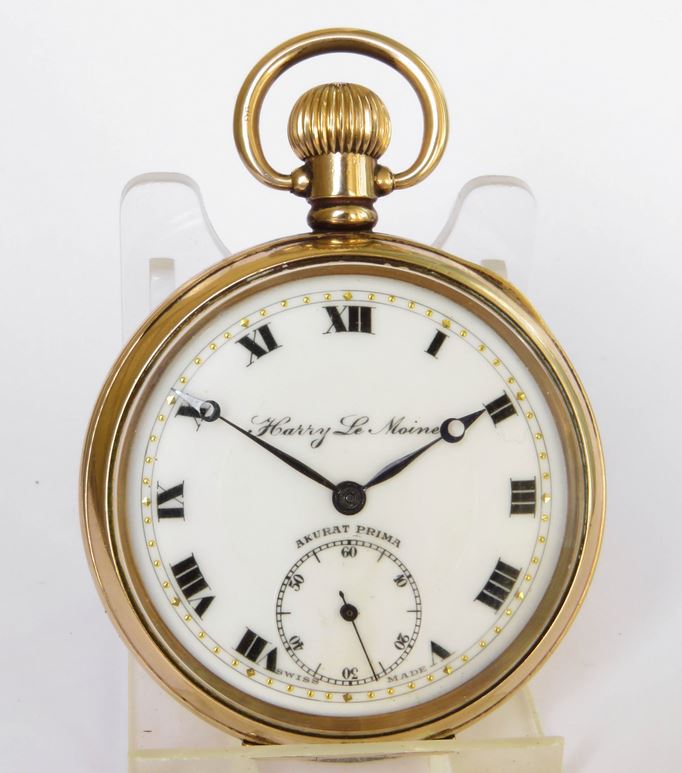The small town of Waldenburg had for centuries, sat on the important Basel – Geneva trade route through the Jura mountains in Switzerland. The constant traffic supplied the town with an income that supplemented the local agricultural industry. However, in the 1850s the trade route was disrupted when the Basel-Olten railway line bypassed the town. This threatened the town’s population with unemployment and poverty. As a result, in 1853 the town decided to enter the watch and clock-making industry and founded the “Société d’Horlogerie à Waldenburg” (Waldenburg clock and watchmaking company).
Takeover
The intention was to manufacture ébauche movements in a purpose-built factory. However, the enterprise didn’t flourish and in its first couple of years of operation, the factory generated a deficit of over CHF 35,400. In order to relieve the municipal debt, the business was sold in 1859 to a local merchant, Gédéon Thommen (1831 – 1890) from Waldenburg and the watchmaker Louis Tschopp from Biel. Thommen had already been a member of the Board of Directors since 1857. After the restructuring by Thommen, the company began to recover. Manufacturing and assembly methods were fundamentally improved. In addition, particular importance was attached to the production of quality watches. Tschopp retired in 1869.
Modernisation
Gédéon Thommen was now the sole owner and renamed the company “Gédéon Thommen – Uhrenfabrikation” (watchmaking). In 1870 Thommen patented the “System der Auswechselbarkeit der einzelnen Werkbestandteile” (interchangeable component system). This ground-breaking patent allowed for the manufacturing of interchangeable watch components. This made it possible to transfer to a series or assembly-line production system. Also, in 1870 Thommen introduced the “Remontoir-Patent”, which was for a winding system via a crown rather than a key.
The new manufacturing methods had an immediate effect on production. In a new factory, in 1870, 4,000 watches were produced. By 1890 the output had increased to 13,000 watches per annum. Thommen was becoming less and less dependent on suppliers, as the growing company could produce complete movement blanks in its own factory. In 1875, in parallel to the previous production of cylinder movement watches, Thommen started producing lever movement watches. The brand name of the watches during this period was GT.
Public service
Thommen’s capacity for work and a sense of responsibility for the community was no secret to the local people. He devoted himself to civic causes in a number of ways. He was a member of the National Council within the Swiss Federal Assembly for 26 years. The education system was also a particular matter of personal concern. He was a co-founder of the “Waldenburger Bezirksblatts” (the local newspaper) and played a prominent part in the establishment of the Liestal – Waldenburg narrow-gauge railway, which opened in 1880. Apparently, the opening of the railway inspired the invention of the “Springeruhr GT” a pocket watch with a mechanical digital display in 1885.
Revue and Vertex brands
In 1890, Gédéon Thommen died as a result of a sudden illness. His son Alphonse took over the company. In 1905 Alphonse Thommen transformed “Gédéon Thommen – Uhrenfabrikation” into a limited company. The company would be called “Revue Thommen AG”. Additionally, in 1908, the brand name changed from GT to Revue. The company supplied watches for the UK market under the name “Vertex”. The UK agent for Vertex watches was Claude Lyons whose office was at 28 Hatton Garden, London.
The Revue watches were produced with their own production machines according to modern methods. They were considered to be good quality watches, meeting with general approval among experts at the time. Following the First World War and the emergence of the trench watch, Thommens started including wristwatches in their line. The increased production volumes required subsidiaries to be opened in Gelterkinden and Langenbruck. An additional, production facility was built in Waldenburg.
During the First World War, the company diversified into aviation instruments. In 1915, Thommens received an order from the federal government for the development of cockpit instruments. These were to be installed in the first aircraft, imported from France at the time, for the newly formed Swiss Air Force. This laid the foundation for the aviation activities that became a major part of the business from the 1930s. Eventually, the aviation side of the business became dominant and watchmaking ceased during the 1990s. However, the watchmaking ‘brand’ was subsequently revived by Grovana Uhrenfabrik AG in 2001.
Related content
Revue Thommen entry in Wikipedia.
Gédéon Thommen at ancestry.com
